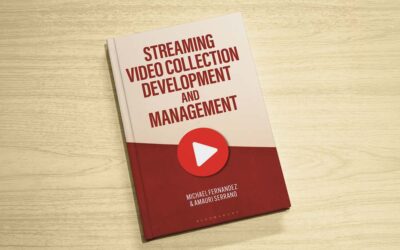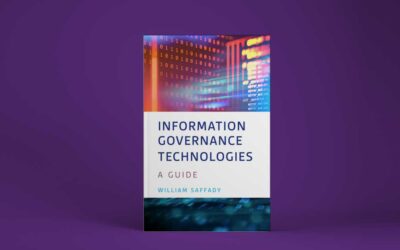Librarians and Technology #12: The Role of Information Professionals vis-a-vis Technology
Miriam Kahn, MLS, PhD
The core role of information professionals is to help people find the information they seek. Technology, in all its various forms and formats, provides tools and access points for performing research and providing access to requested data.
Whether performing a simple search and retrieval operation or teaching patrons how to use our resources, information professionals are all about finding information—or rather, helping our patrons find a starting place for their research. Over the decades, information professionals have been both information gate-keepers and gate-openers. We’ve mediated searches and reference questions and opened the gate between the researcher and resources. Information professionals are teachers—training specialists who seek answers to complex questions. Throughout it all, skills for special librarians include using a variety of technologies to perform their tasks and provide access to information and data.
Technology in an Analog World
In the past, before there was a computer on every desk, librarians, archivists, and other information professionals helped patrons and researchers find answers to questions through the use of catalogues and indices, through specialized dictionaries and concordances. They worked with specialized and varied resources that provide access to complex writings, compendia of data, and even symbols and art. Information professionals partnered with subject specialists and scholars, analyzing resources and providing access points. Examples of these resources include concordances to Biblical literature, Shakespeare, and Classical (Greek and Roman) writings and archaeological finds. Indices opened up the writings of the Church Fathers and compiled sermons, word usage, music, and artworks.
In addition to print indices, there were a multitude of resources on microfilm and micro-opaque cards. Specialized resources and catalogues were often found reproduced on film. Most business, corporate, and academic libraries had a variety of specialized reference tools in addition to a host of books for their researchers to consult. These catalogs and indices, from Readers Guide to Periodical Literature to Business Index, from Science Citation Index to the US Monthly Catalog of Government Publications provided access to print resources within and across disciplines.
Computers and Other Technologies
With the advent of computers and the ability to connect to them over cables and phone lines, catalogues, indices, and online databases became the most common technologies in libraries and information centers. Information professionals added more skills to their repertoire, skills for special librarians now included becoming familiar with various searching strategies and complex databases.
In analog and digital environments, information professionals continue to provide instruction on the use of various technologies including specialized computer programs, playback equipment for audio (tape, records, and digital files), video (film, videocassette, and digital recordings), and even microfilm and other micro formats. In all these instances, information professionals are both gate-keepers and –openers, making resources accessible—especially unique, hidden, and unprocessed collections.
Today, technology evolves continuously and fills the lives and working days of both information professionals and their patrons. At the same time and at a more rapid pace, equipment and technology become obsolete. When the playback equipment doesn’t work or software and hardware cannot communicate with one another, information professionals must consider whether to move to a new technology and access method or keep the old running for as long as possible. (The topic for my next column.)
Staying Current vis-a-vis Technology
Keeping up with changes in technology, advances in searching, retrieval, and subject coverage, is a full-time job. Skilled information professionals are proficient at learning the ins and outs of database retrieval, the nuances of search strategies, and identifying the accuracy of retrieved results. Staying current requires fluency in advanced and sophisticated search strategies and information seeking behaviors. It includes mining thesauri, cultivating controlled vocabulary, and delving into the complexity of advanced search features in all databases and online resources available in an information center.
For the skilled information professional, knowledge of how and why a database is structured is less important than knowing how to request and retrieve the desired information for a researcher. Sorting out irrelevant citations from retrieved data is a shared responsibility with the researcher. This sifting and winnowing process often requires in-depth knowledge of the field. While information specialists may mediate between the data and the results, for most generalists, their responsibility is to formulate the ‘best possible’ query and eliminate the truly off-target results. This entails working hand-in-hand with researchers or subject specialists to hone the search strategy and identify the required results or the appropriate resources for the next step in a research project.
Summing it up
If we follow the adage that librarians (read: information professionals) “know a little bit about everything,” then it follows that they should also know how to perform a search, follow a query to identify the best resources, and identify the most advantageous and specialized technologies that provide access to requested information. Harnessing technology to do our bidding is only half the trick. Focusing on understanding the idiosyncrasies of databases, websites, and search engines is the other half.
When in doubt, information professionals do two things vis-à-vis technology: they use advanced search features to hone their queries and results—and they read the help materials which include examples of how to search, use special search characters and symbols, and limit extraneous materials.
Information professionals have always harnessed technology to access resources and reference materials. While formats have changed and print indices and catalogs morphed into online databases, technology continues to be an efficient tool for information professionals.
My next post will examine the rationale for retaining obsolete formats and equipment in information centers.
Miriam Kahn, MLS, PhD
Miriam B. Kahn, MLS, PhD provides education and consulting for libraries, archives, corporations, and individuals. See Miriam’s pieces for Lucidea covering library technology and skills for special librarians. Also check out SydneyEnterprise, and GeniePlus, Lucidea’s powerful integrated library systems.
Similar Posts
Interview with an Author: Fernandez on Streaming Video Collection Development
As demand for streaming video in libraries grows, so do the challenges of managing access, budgets, and licensing. Co-author Michael Fernandez shares key insights from his book, “Streaming Video Collection Development and Management”.
Interview with the Author: Saffady on Information Governance Technologies
Technology is at the heart of modern information governance, shaping how organizations manage records and ensure compliance. In this interview, expert William Saffady shares insights on the essential technologies driving the field and what information professionals need to know.
Reflections on David Epstein’s Range: How Generalists Triumph in a Specialized World
Lauren Hays explores “Range: How Generalists Triumph in a Specialized World” through a librarian’s lens, reflecting on the role of broad knowledge in critical thinking and problem-solving.
Interview with the Editor: Bobbi L. Newman on Well-Being in the Library Workplace
Enjoy Lauren Hays’ interview with Bobbi L. Newman on why workplace well-being matters, how managers can drive meaningful change, and what steps libraries can take to create a culture of trust and support.




Leave a Comment
Comments are reviewed and must adhere to our comments policy.
0 Comments